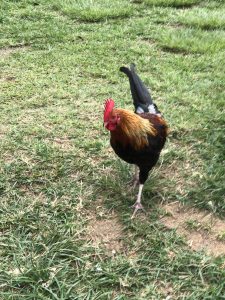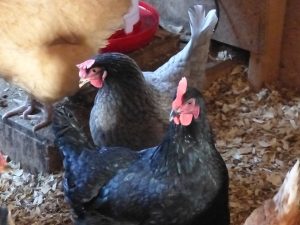In the summer of 1896, a heat wave gripped New York City at a time when people lived crammed together in tenements. Lacking air conditioning and running water, the heat killed about 1500 people in ten sweltering days.
In an era when governments did little to help people, then relatively unknown Theodore Roosevelt took action that saved lives and launched his political career.
As police commissioner he ordered the fire department to spray down the exterior of buildings, sidewalks and streets with water and worked to have ice delivered to suffering people. The water dropped building temperatures a few degrees and likely saved lives.
People and chickens are alike in many ways. Beginning chicken owners worry that winter’s chill will kill their birds without realizing that heat is deadlier to both chickens and people. Severe cold is dangerous, but summer’s swelter likely kills more birds.

Preparation and management keep hens safe and productive during heat waves. Although heat is common down south, northerners also must be heat conscious. Every summer 100-degree days descend on North Dakota and Minnesota, and during the 2021 summer even the normally cool Pacific Northwest roasted.
Flock owners can help hens remain comfortable and laying during heat waves by choosing heat resistant breeds and taking steps to keep the coop and run cool when the sun blisters.
Chickens evolved in the steamy jungles of Southeast Asia. The Hawaiian Island of Kauai has a similar tropical climate. Wild chickens thrive on the island. Their bodies and actions show how they cope with heat. Kauai’s chickens are small, lightly feathered, and usually have large combs that radiate heat from their bodies. These savvy chickens enjoy midday shade and are most active during evening and morning. They enjoy the cool air by streams and drink plenty of water.
Anyone placing a chick order should pay attention to the chart toward the back of the Hoover’s Hatchery catalog. It lists breeds by temperament, production, and whether they are cold or heat hardy. Fortunately, most breeds are suitable for both hot and cold climates, but the best birds for regularly hot climates have small bodies, large combs, and lay many white eggs. Leghorns and California Whites are examples. Their physique is like Kauai’s wild chickens.

There is a dilemma. In early 2021 extreme cold hovered over Texas, a state usually roasting hot. So, even in the deep south chickens need to be able to tolerate cold days.
Whether in the snow belt or down south people can take actions that keep hens alive and laying during heat waves. Here are a few:
- Theodore Roosevelt saved human lives by soaking down buildings and pavement. Chicken owners can sprinkle the coop’s exterior when it’s hot. Evaporation slightly cools the coop. Chickens can’t sweat. They cool their bodies by panting to evaporate water from their throats. They must drink plenty of water. Always keep cool, clean water available.
- Situating a coop under a leafy tree keeps it cooler. Chicken run ramadas offer daytime shade.
- A summer breeze provides delicious relief on sultry nights. Allowing breezes to dance through open windows helps keep birds cool. Be sure to cover windows with sturdy wire mesh that welcomes the breeze to enter while deterring raccoons. Add a fine mesh on the inside of the windows to deter mosquitoes.
- On the hottest nights positioning a fan in the coop with its breeze pointed at roosting chickens helps keep them comfortable.
- Moving or riling up chickens during heat waves is lethal. Let them quietly rest in the shade.
Chickens endure summer’s inferno and winter’s blasts best if their owners protect them from weather extremes.